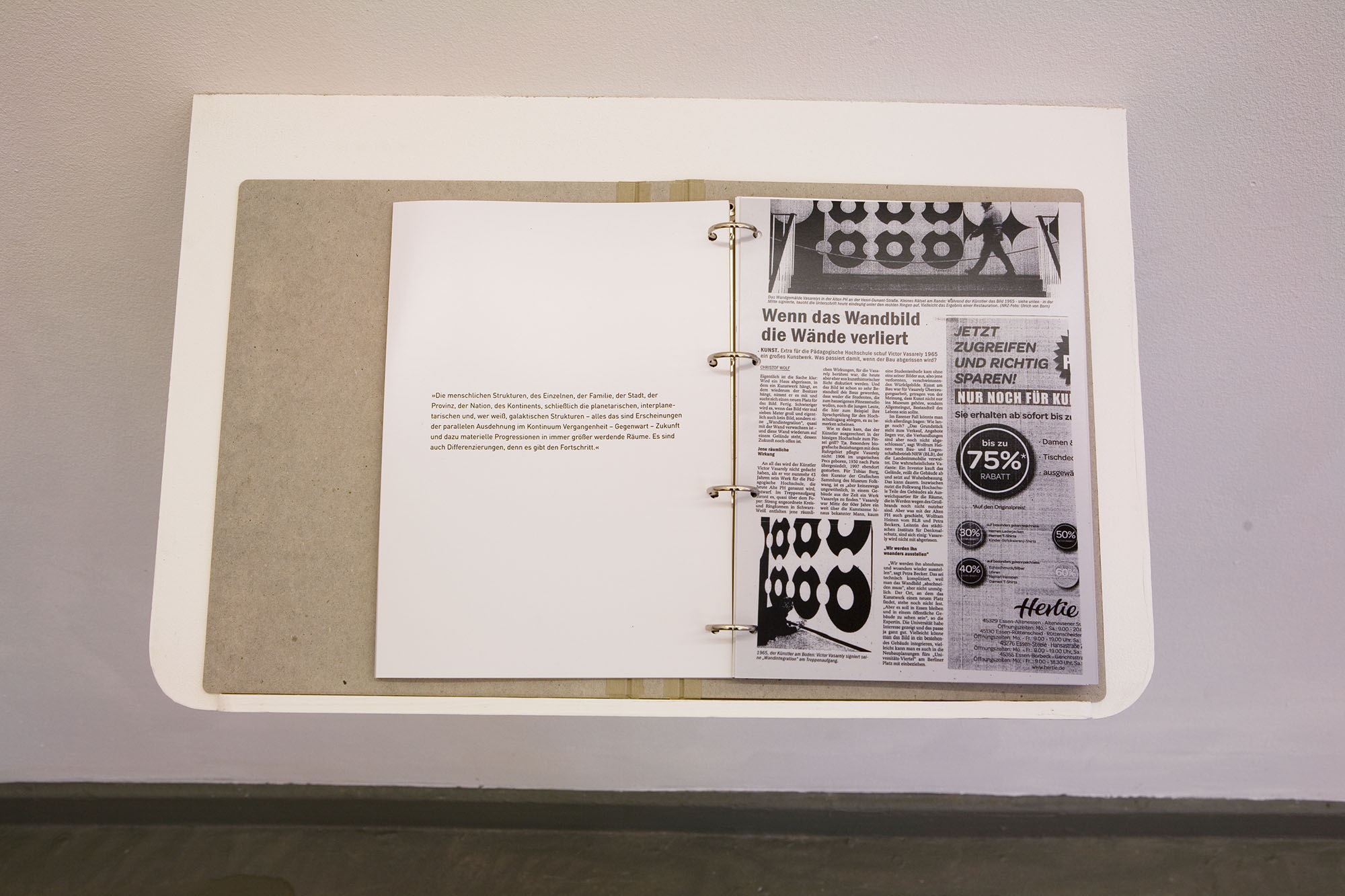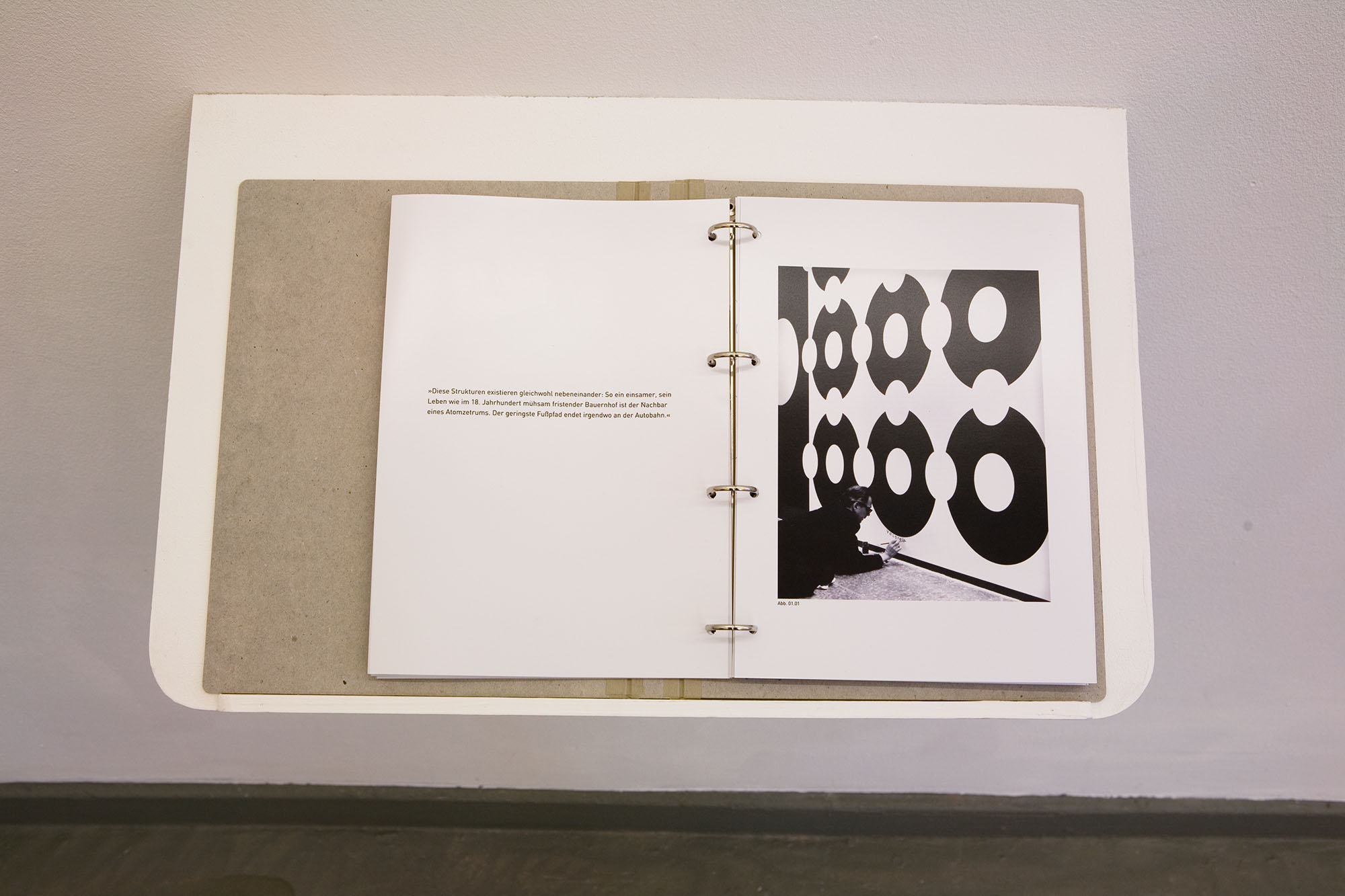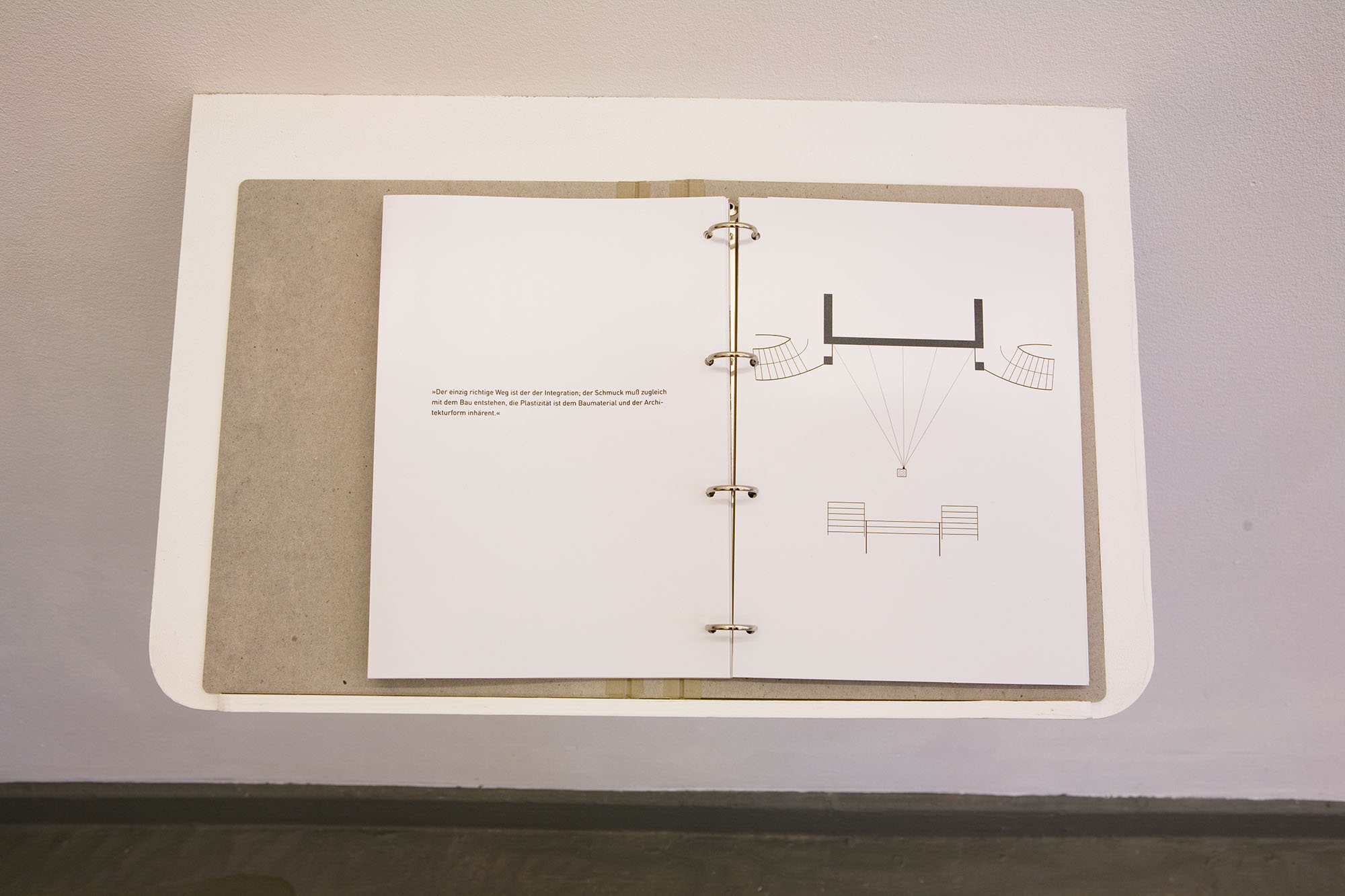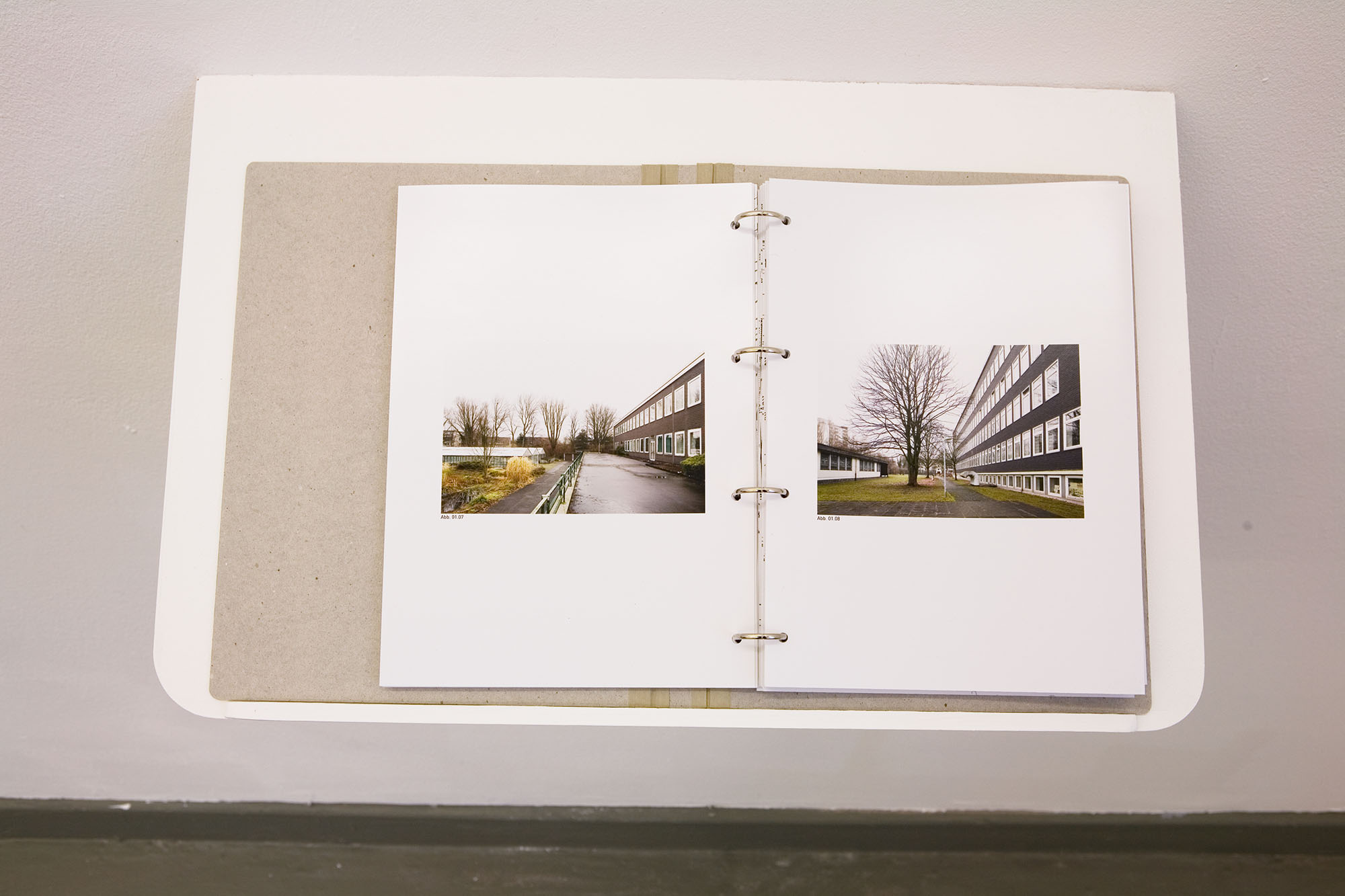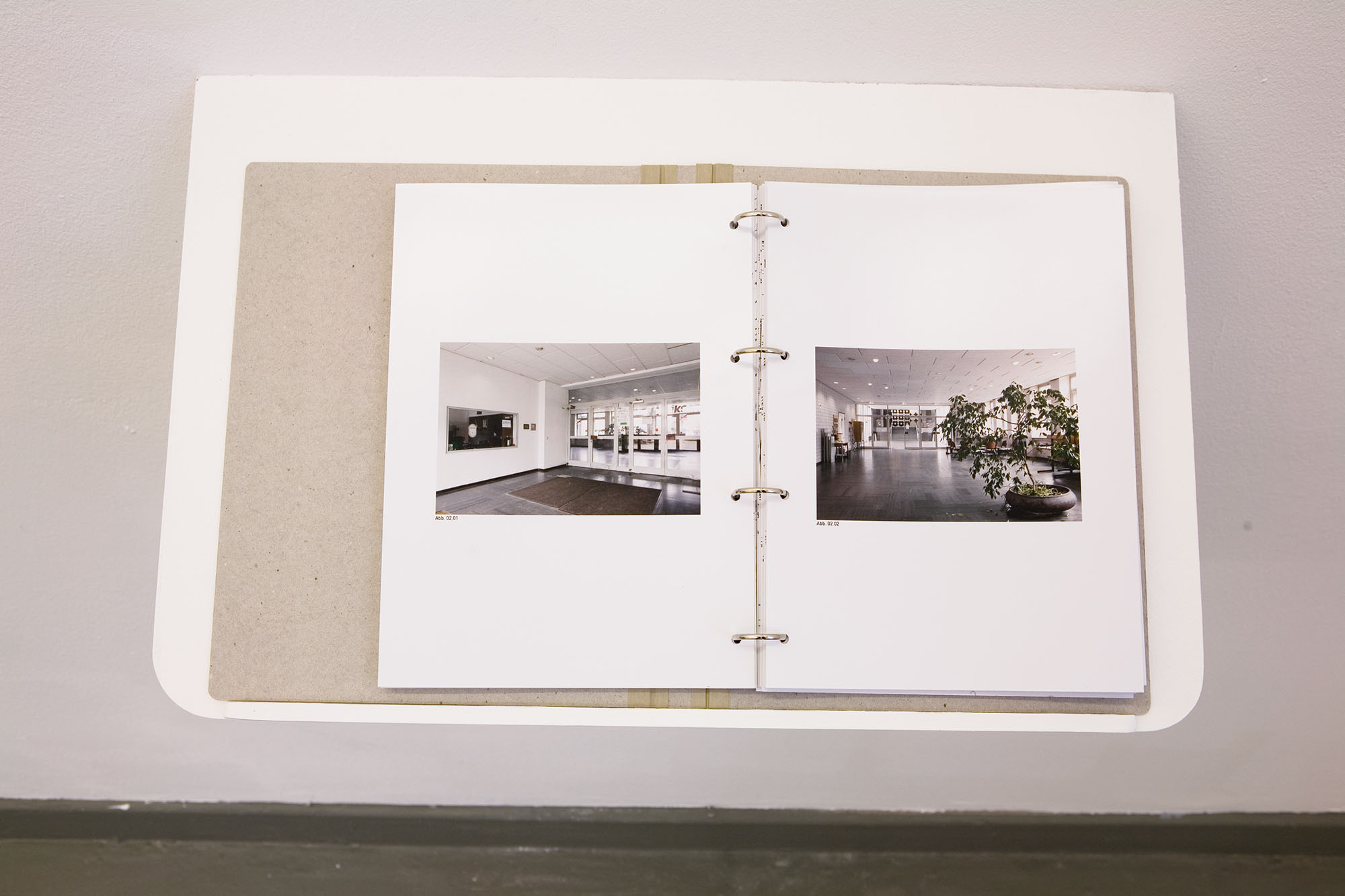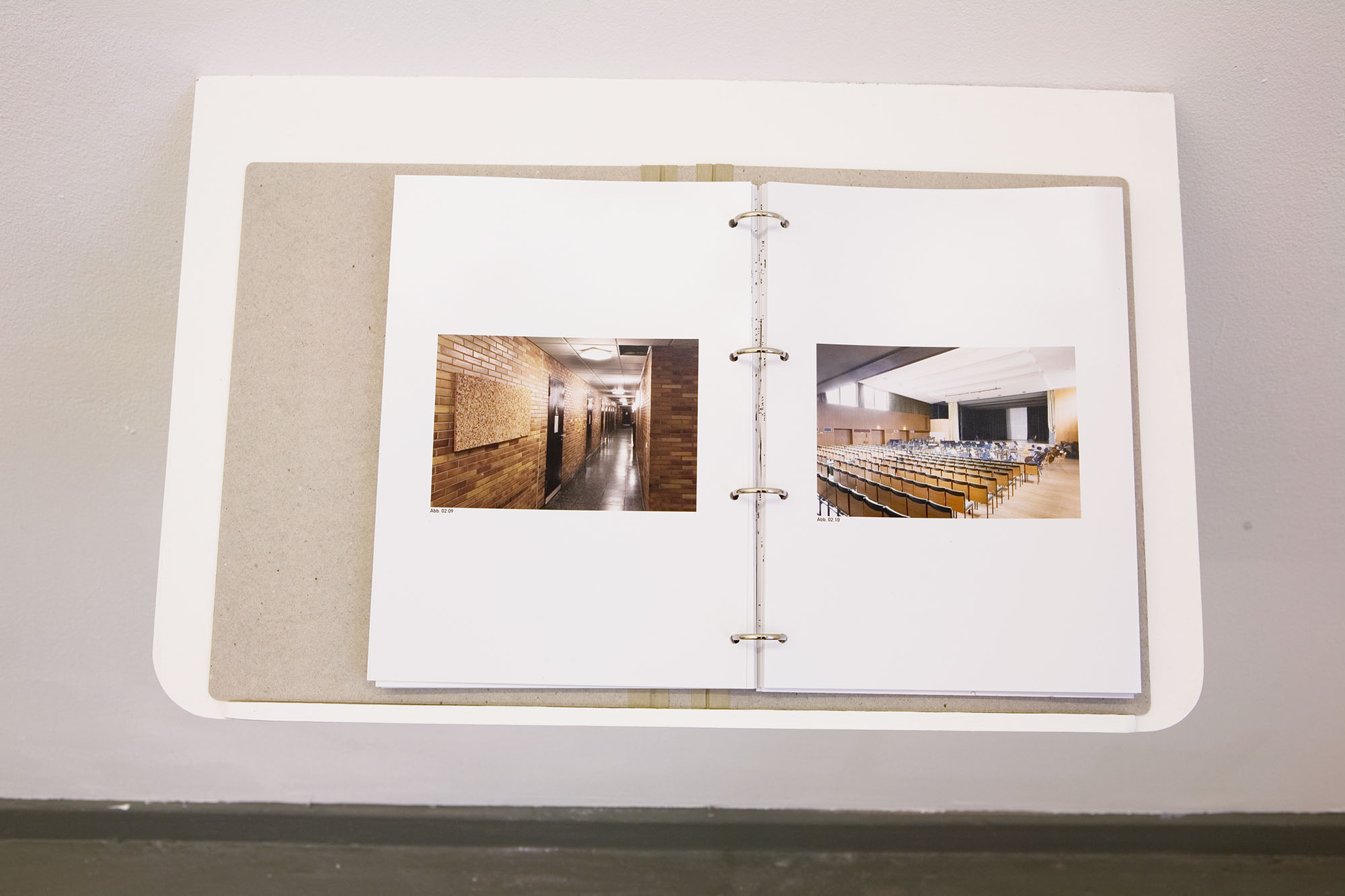An investigation into the history and future of an intégration architecturale by Victor Vasarely from 1965 touches on questions of authorship and originality while documenting the relationship of an artwork to the architecture that inspired it.
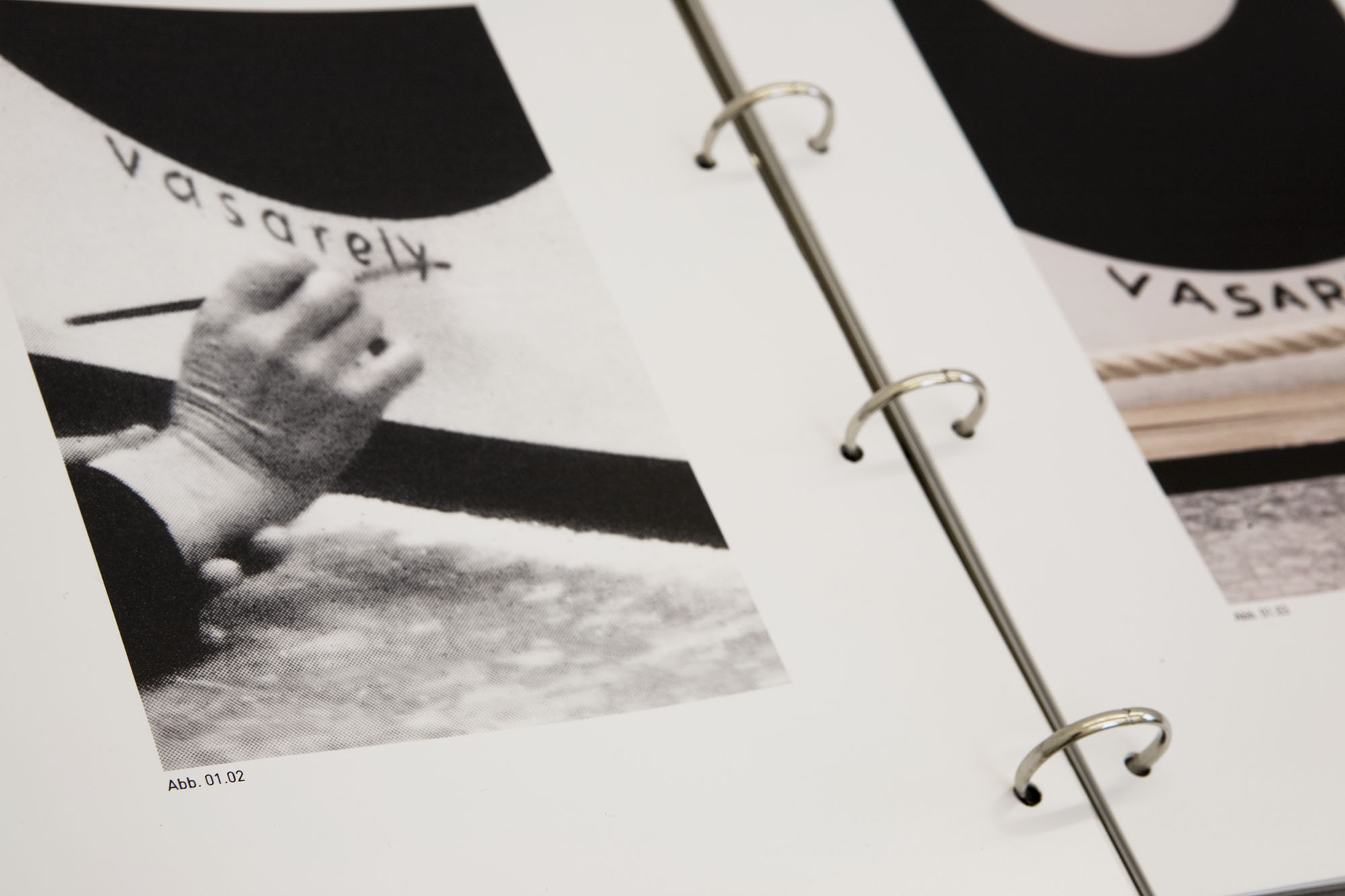
Despite his „proto-conceptual“ approach, Victor Vasarely signed his piece in an old-masterly manner at the inauguration in 1965. Over the years, the signature has changed from minuscules to majuscules.
Human structures of the individual, the family, the town, the province, the nation, the continent, and eventually the planetary, interplanetary, and, who knows, the galactic structures – they all are phenomena of the parallel expansion in the continuity of past – present – future. Furthermore, they are material progressions into ever more deepening spaces. They are also differentiations because progress exists. […] These structures, nevertheless, exist simultaneously: such a lonely farm, scraping a living like in the 18th century, is the neighbour of a nuclear power plant. The merest trail ends somewhere at the motorway.
Victor Vasarely

Victor Vasarely’s intégration architecturale was conceived and realised as art in architecture (Kunst am Bau) for a specific site in a university building (Pädagogische Hochschule) in Essen. The building was abandoned in the 2000s and was given up in 2011. Eventually, it was demolished to make space for real estate development. While the building was sacrificed, the artwork was evacuated and restored as it had been overpainted with graffiti.
While the conservation department of the federal state of North Rhine-Westphalia considered the artwork more valuable than the whole building, the artistic research project delved into different questions: why should a site-specific artwork be transplanted from its original location? Why should an artwork that was produced in a “proto-conceptual” manner (use of photographic reproductions, the implementation by assistants) be preserved as an “original” instead of choosing a reproduction in a new location?
The artwork was an exceptional representation of the utopian zeitgeist and its enthusiasm for technological progress. Why did it need additional props like a pedestal and a protective rope to assert its status as an artwork just a few years after the inauguration?
And last but not least:
How did the “old-masterly” signature of Vasarely change from minuscules to majuscules over time?
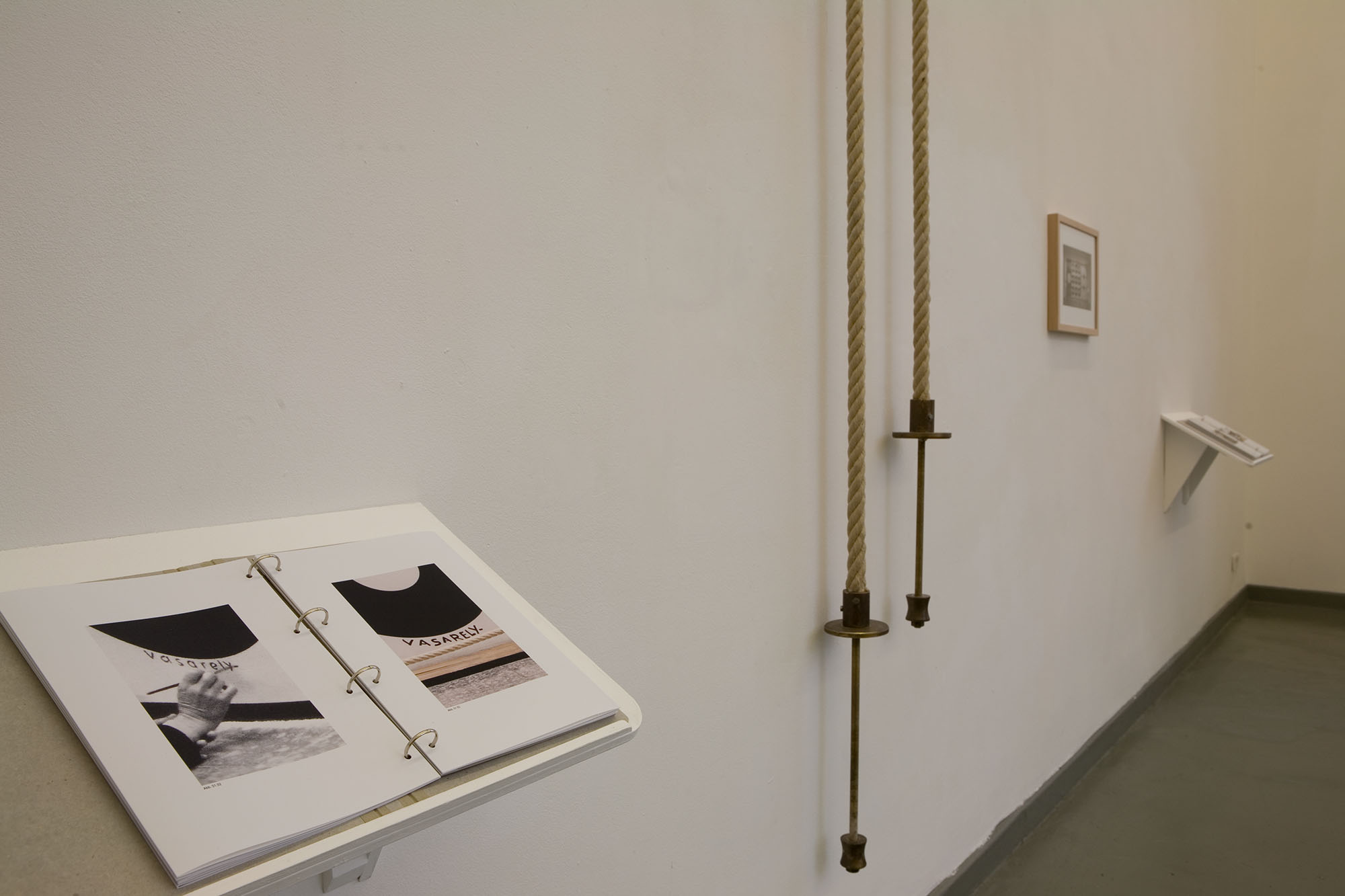
Rundgang (open days), Staatliche Kunstakademie Düsseldorf, Klasse Rita McBride
2011, February 9 – 13
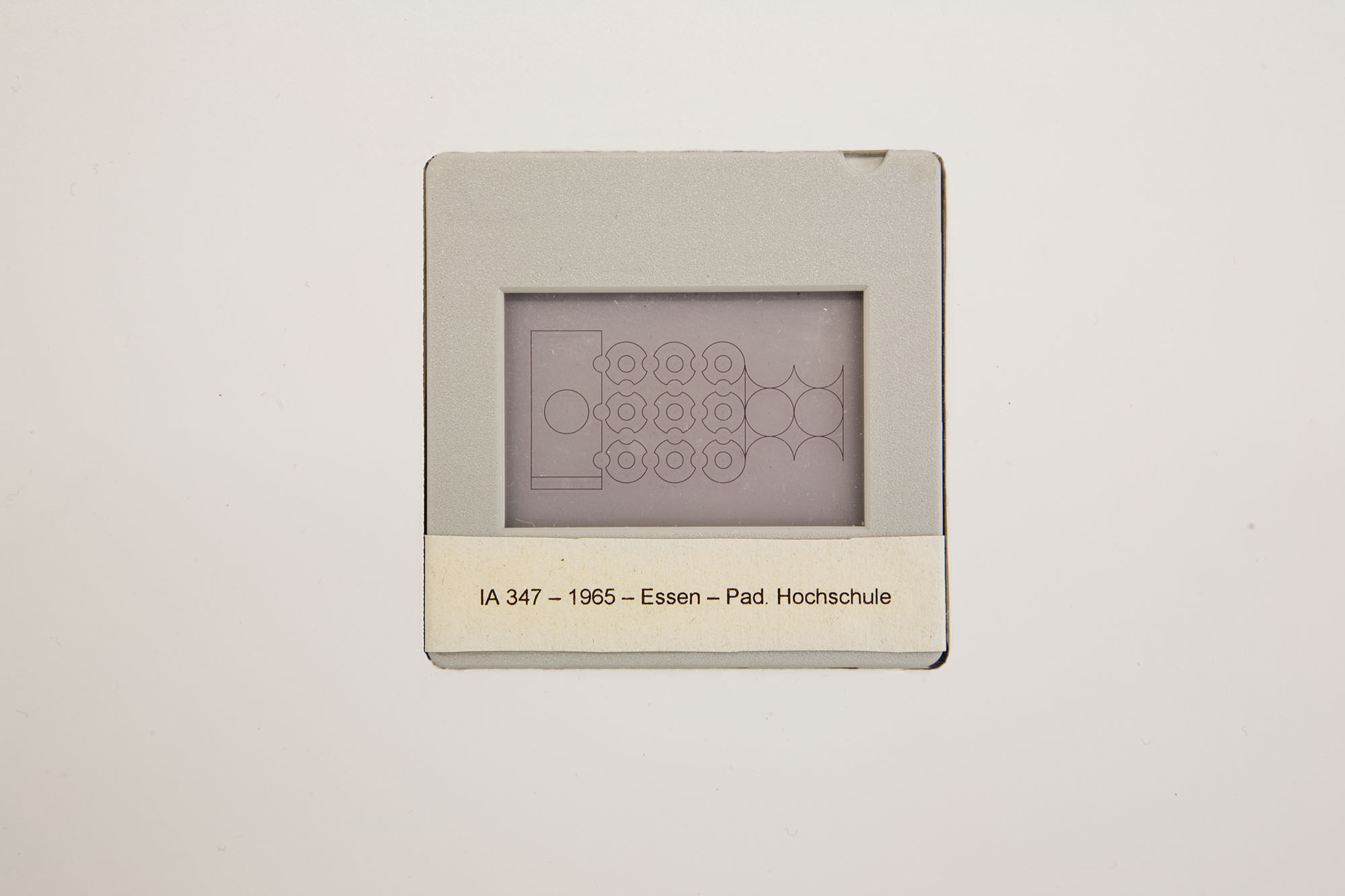
Slide / blueprint for the reproduction of the intégration architecturale
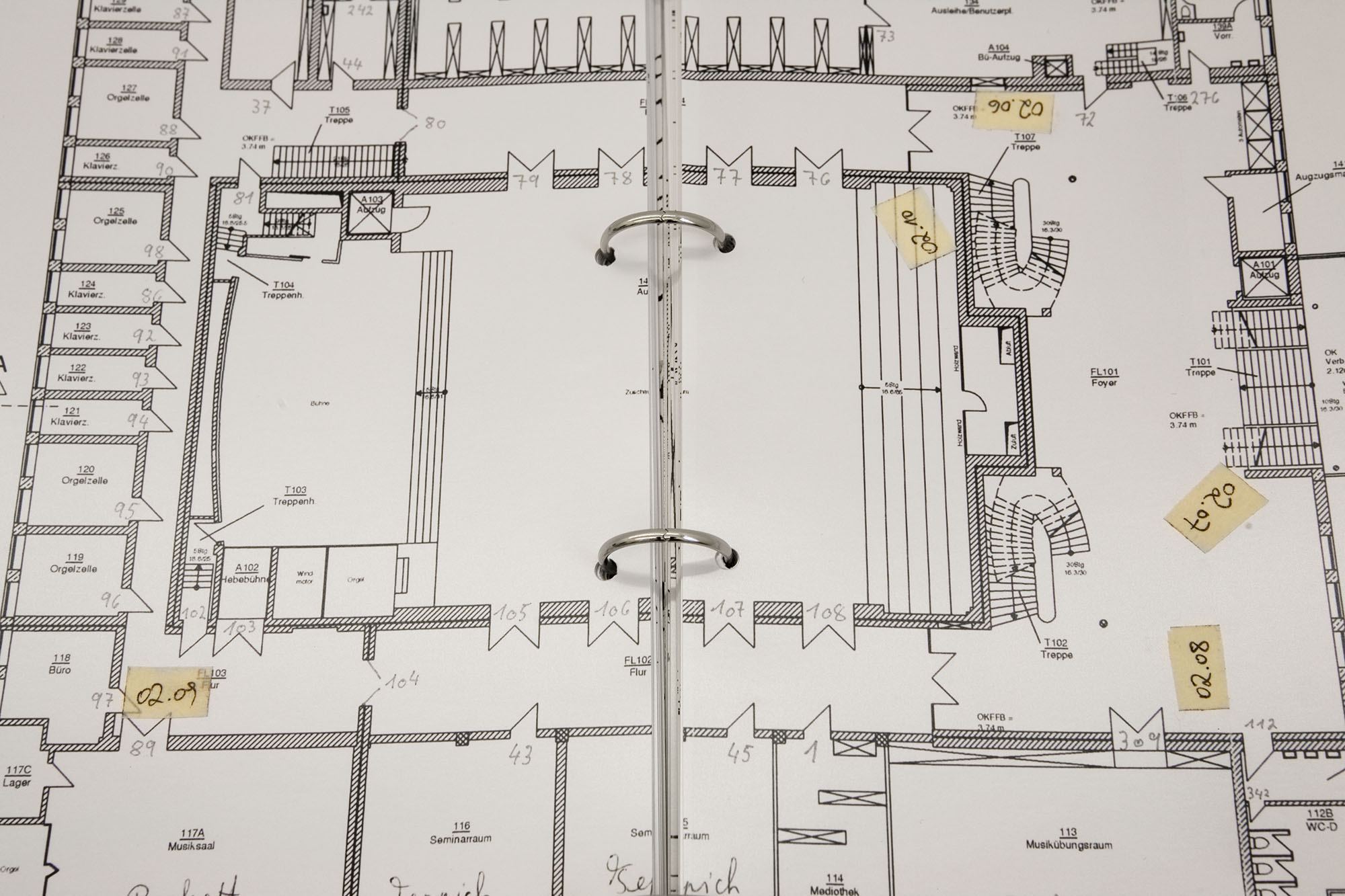
Photographic documentation of the building, with camera positions, indicated in the construction plan

Img. 02.03
